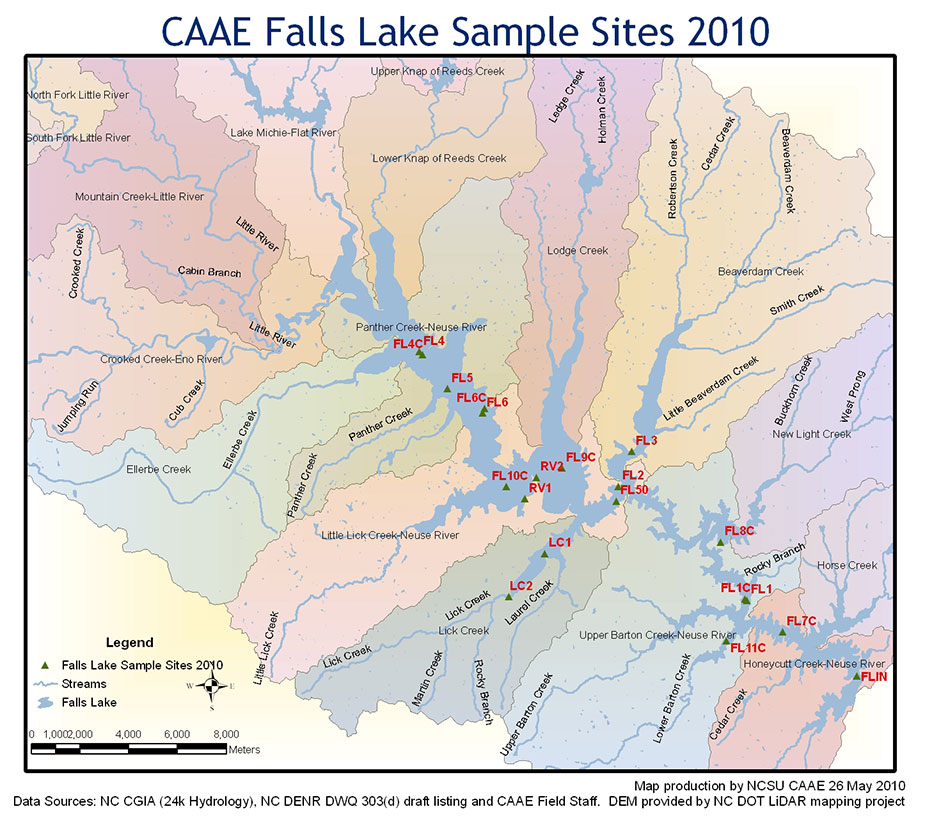
Cyanobacteria Project- North Carolina Reservoirs
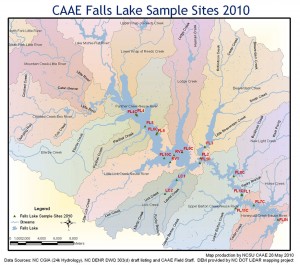
Click to enlarge
The Center for Applied Aquatic Ecology is working with the the City of Raleigh and the City of High Point to collect real-time monitoring data for environmental conditions in several potable water supply reservoirs. The CAAE is also characterizing the cyanobacteria species assemblages and abundances in selected reservoirs. The projects are an extension of the CAAE’s Real-Time Remote Monitoring Project.
Falls Lake is a primary drinking water source for the Triangle area. The system monitors for the presence of cyanobacteria (blue-green algae), which can cause taste-and-odor problems in water supplies. Some cyanobacteria species also produce toxins that can negatively impact human health. The real-time monitoring data, along with the cyanobacteria assemblage data, will serve as an early warning system to help water quality managers manage water supplies to protect public health in response to blooms.
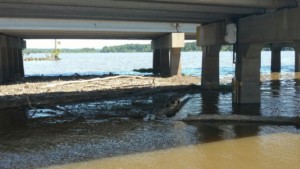
Logs and trash that destroyed the FL85 mount. Photo 12/20/2018 courtesy of Josh Mathis, CAAE.
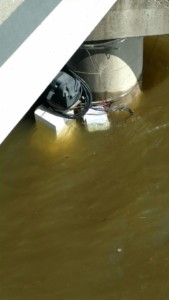
Flooding at Hwy 50 bridge. The FL50 profiler is underwater. Photo 12/20/2018 courtesy of Josh Mathis, CAAE.
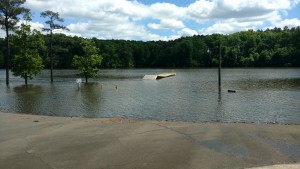
Water level at Beaverdam Recreation Area on April 25 2017 after more than 8 inches of rain over a 3-day period. Photo courtesy of Josh Mathis, CAAE.
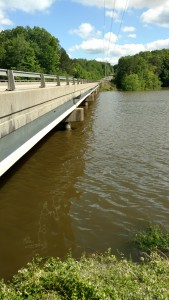
Water level at Falls Lake Hwy 50 on April 25 2017. This is the third major flood in 16 months.
Photo courtesy of Josh Mathis, CAAE.
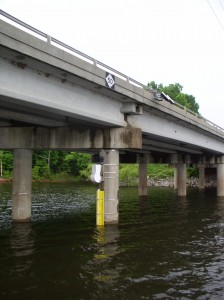
Water level at Falls Lake Hwy 50 at time of install in May 2008.
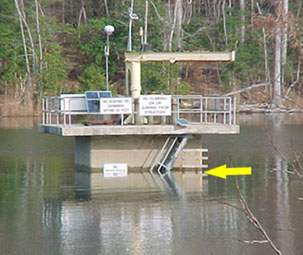
Water level at Falls Lake intake on Nov. 28 2006 after removal of the NCSU-CAAE profiler equipment. Photo courtesy of F.L. Masters.
Yellow arrows indicate high water level following a coastal storm in late Nov. 2006. Red arrows indicate water level on Sept. 1 2004, shortly after the installation of the profiler. Blue arrow indicates water level during drought conditions on Nov. 8 2005.

Water level at Falls Lake on September 1, 2004.
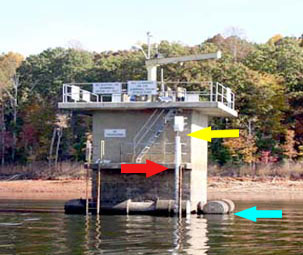
Water level at Falls Lake on November 8, 2005.
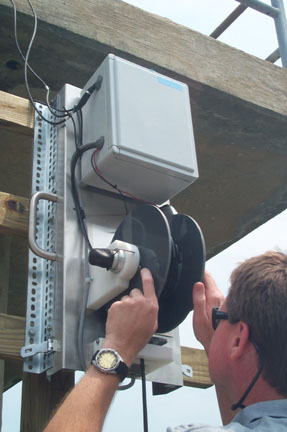
The Center for Applied Aquatic Ecology began working with the North Carolina Department of Health and Human Services to collect real-time monitoring data for environmental conditions in several potable water supply reservoirs. The FALMOR program on Falls Lake was expanded with the City of Raleigh. The project is an extension of the CAAE’s Real-Time Remote Monitoring Project.
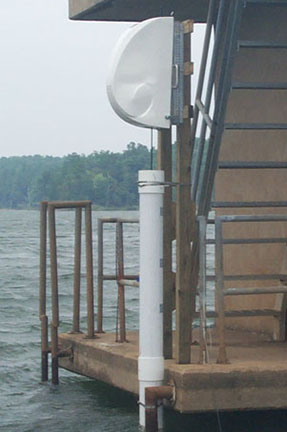
Falls Lake is a primary drinking water source for the Triangle area. The system monitors for the presence of cyanobacteria (blue-green algae), which can cause taste-and-odor problems in water supplies. Some cyanobacteria species also produce toxins that can negatively impact human health. The real-time monitoring data, along with the cyanobacteria assemblage data, will serve as an early warning system to help water quality managers manage water supplies to protect public health in response to blooms.

